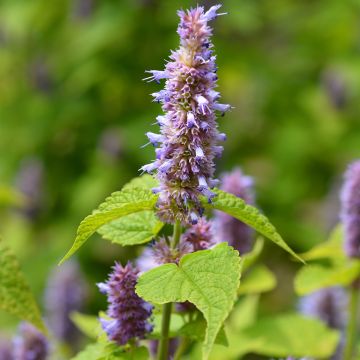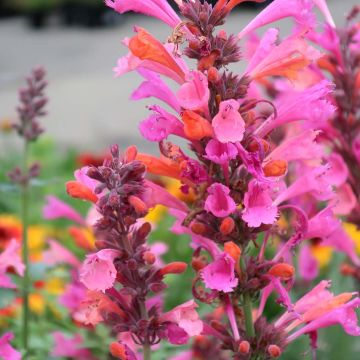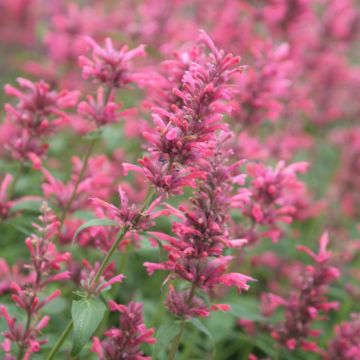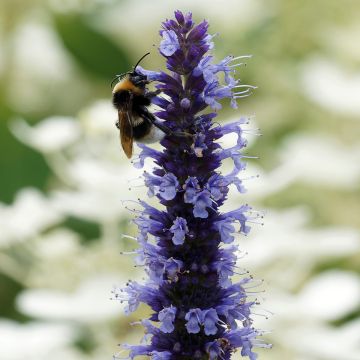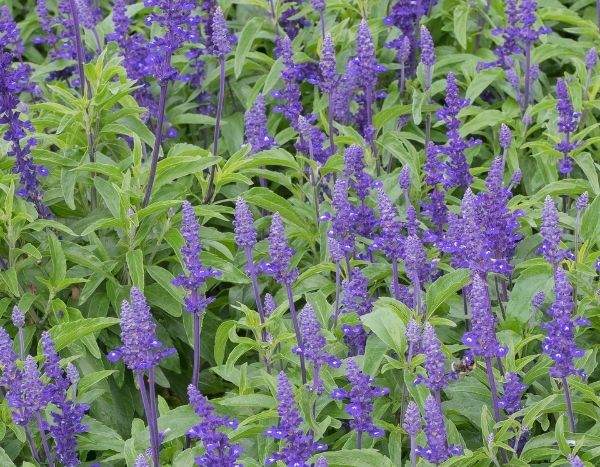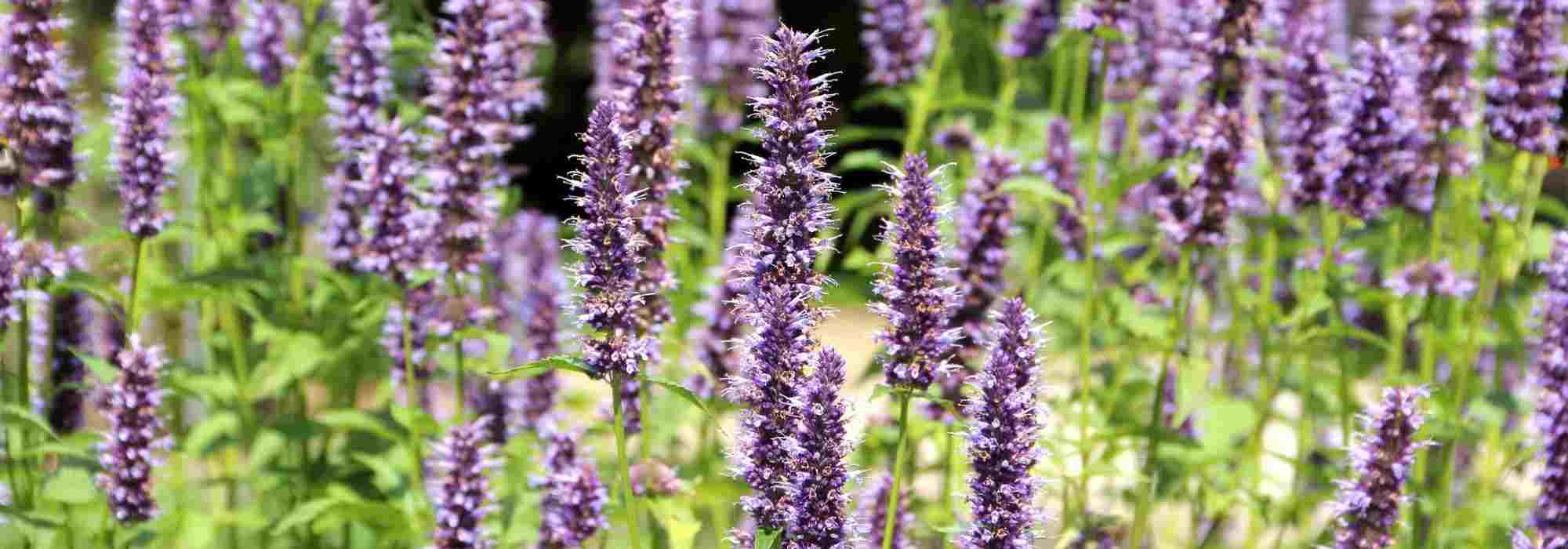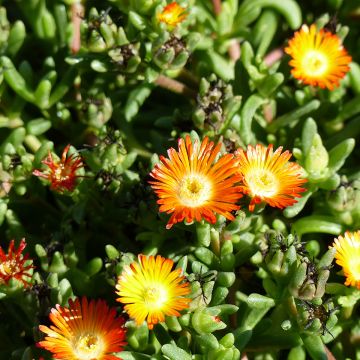

Agastache cana


Agastache cana
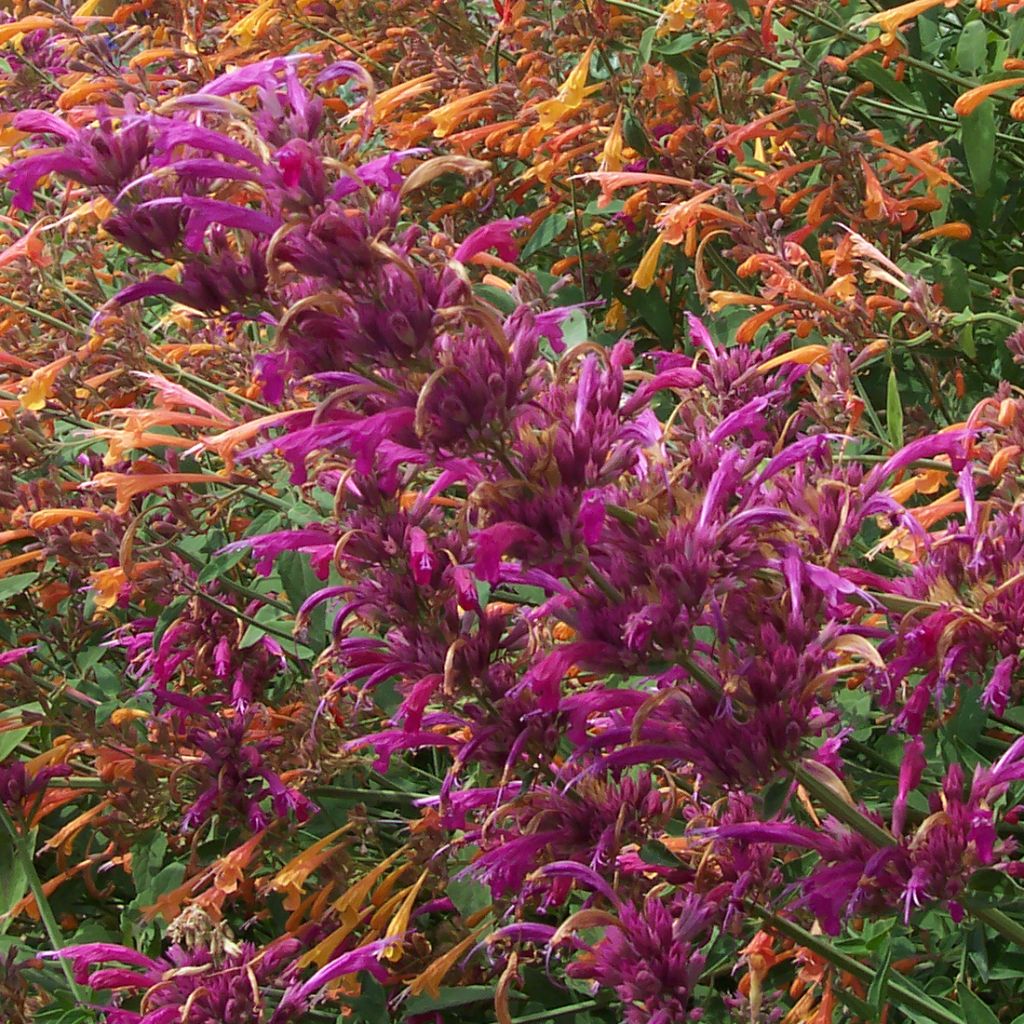

Agastache cana
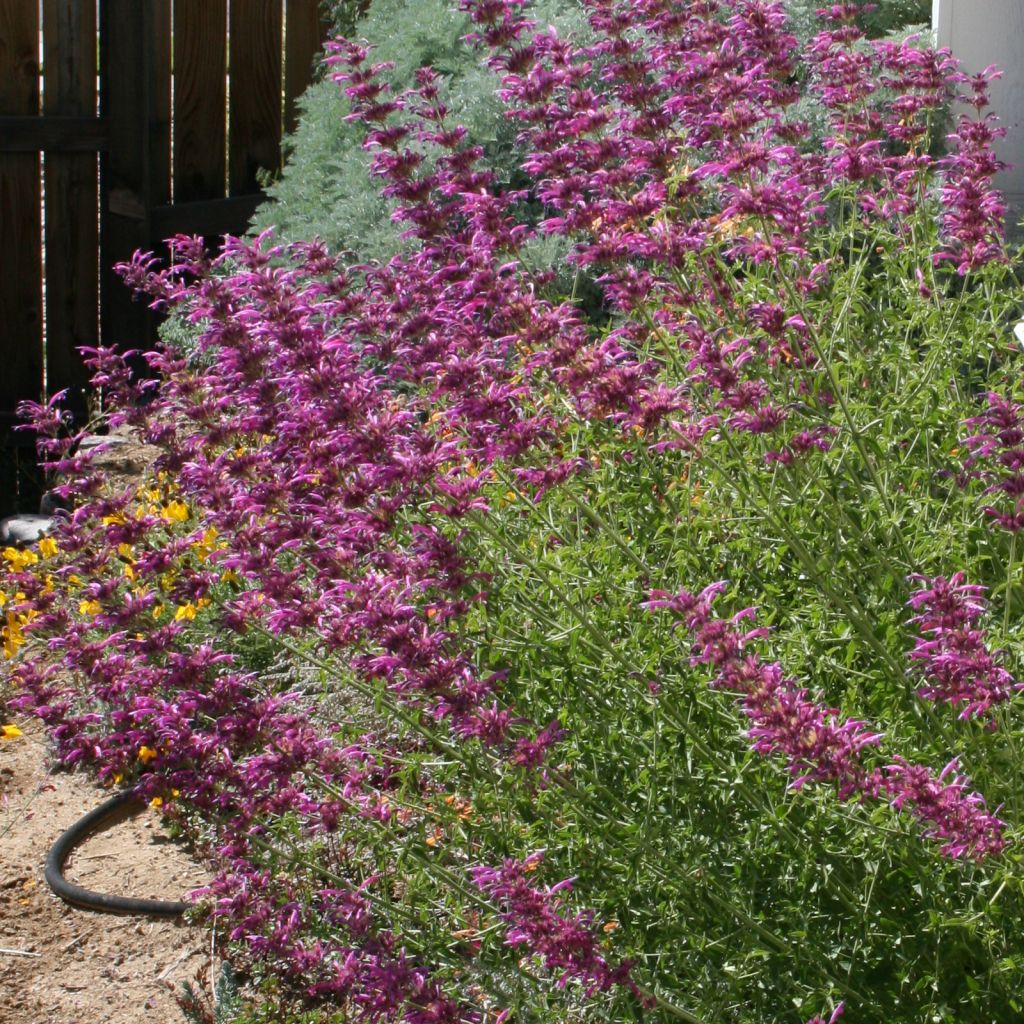

Agastache cana
Agastache cana
Agastache cana
Silver agastache
Great disappointment: none of the agastaches planted emerged. Delivered without stems.
Fanny, 29/09/2024
Special offer!
Receive a €20 voucher for any order over €90 (excluding delivery costs, credit notes, and plastic-free options)!
1- Add your favorite plants to your cart.
2- Once you have reached €90, confirm your order (you can even choose the delivery date!).
3- As soon as your order is shipped, you will receive an email containing your voucher code, valid for 3 months (90 days).
Your voucher is unique and can only be used once, for any order with a minimum value of €20, excluding delivery costs.
Can be combined with other current offers, non-divisible and non-refundable.
Why not try an alternative variety in stock?
View all →This plant carries a 12 months recovery warranty
More information
We guarantee the quality of our plants for a full growing cycle, and will replace at our expense any plant that fails to recover under normal climatic and planting conditions.
Would this plant suit my garden?
Set up your Plantfit profile →
Description
Agastache cana, also known as silver agastache, is a North American botanical species appreciated for its long flowering period, aromatic vegetation, and its drought resistance. It is a pollinator-friendly plant that brings colour and life to borders, rock gardens, and containers. In theory, it is a perennial plant that quickly forms a beautiful flowering clump. It requires no watering in summer, but does not survive well in humid winters. This agastache can self-seed.
Agastache cana belongs to the Lamiaceae family, like mints, lavenders, and numerous aromatic plants. This species is found from the southern United States (Texas) to New Mexico. In the wild, it is found on slopes of arid mountains, between 1200 and 2000m (3937 and 6562ft) in altitude, in regions where summer and winter are dry. It is a woody-based perennial plant with trailing roots. It grows rapidly, developing into a well-branched clump that is almost as tall as it is wide. When in bloom, it measures approximately 70cm (28in) in height and 60cm (24in) in width. Its quadrangular stems bear small, lanceolate, hairy, coarsely toothed leaves, 0.8 to 1.2cm (1in) long, with a slightly greyish-green colour. When crushed, they release a slightly aniseed and minty fragrance. Flowering occurs from June to September. Short floral spikes form at the tip of the stems, measuring 4 to 6cm (2in). They are composed of numerous bilabiate tubular flowers, measuring 1.2 to 2.5cm (1in) in length, with a deep raspberry-pink colour. This flowering is nectar-rich and pollinator-friendly. The honey produced by bees after foraging on these flowers has a subtle aniseed scent.
Agastache cana thrives in full sun and porous soils that do not retain water. According to most sources, its resistance to dry cold is estimated to be at least -15°C (5°F). This lovely plant will be ideal in natural or country-style flower beds, in a dry garden, in a rock garden, or in a vegetable garden where it can accompany thyme, savory, chervil, or basil. In a rock garden, for example, you can plant it with catmints, lavenders, cotton lavenders, rosemary, and shrub salvias. Wait until spring to plant it in humid regions. Dried flowers can be stored for a long time in bouquets. The leaves can be used in cooking as a substitute for aniseed, or in herbal teas after drying. Rubbing the foliage on the skin is said to repel mosquitoes.
Agastache cana in pictures






Flowering
Foliage
Plant habit
Botanical data
Agastache
cana
Lamiaceae
Silver agastache
Cultivar or hybrid
Other Agastache
View all →Planting and care
Transplant outdoors when all risk of frost has passed. Space the plants 50 to 60cm (20 to 4in) apart. Plant them in well-drained soil, in a sunny location. This plant does not tolerate wet soils in winter. It withstands summer drought once well-rooted. In humid climates, both summer and winter, it tends to behave like an annual plant.
Agastache is a generally robust and undemanding plant. It adapts to most soils, even limestone and clay, provided they are properly drained. In heavy soil, incorporate compost, gravel, or coarse sand into the garden soil. It prefers a sunny exposure or, at most, partial shade. It can self-seed abundantly and become invasive.
To protect the roots from severe frost, cover them with a thick mulch. Also protect them from slugs and snails.
Planting period
Intended location
Care
Planting & care advice
-
, onOrder confirmed
Reply from on Promesse de fleurs
Similar products
Haven't found what you were looking for?
Hardiness is the lowest winter temperature a plant can endure without suffering serious damage or even dying. However, hardiness is affected by location (a sheltered area, such as a patio), protection (winter cover) and soil type (hardiness is improved by well-drained soil).

Photo Sharing Terms & Conditions
In order to encourage gardeners to interact and share their experiences, Promesse de fleurs offers various media enabling content to be uploaded onto its Site - in particular via the ‘Photo sharing’ module.
The User agrees to refrain from:
- Posting any content that is illegal, prejudicial, insulting, racist, inciteful to hatred, revisionist, contrary to public decency, that infringes on privacy or on the privacy rights of third parties, in particular the publicity rights of persons and goods, intellectual property rights, or the right to privacy.
- Submitting content on behalf of a third party;
- Impersonate the identity of a third party and/or publish any personal information about a third party;
In general, the User undertakes to refrain from any unethical behaviour.
All Content (in particular text, comments, files, images, photos, videos, creative works, etc.), which may be subject to property or intellectual property rights, image or other private rights, shall remain the property of the User, subject to the limited rights granted by the terms of the licence granted by Promesse de fleurs as stated below. Users are at liberty to publish or not to publish such Content on the Site, notably via the ‘Photo Sharing’ facility, and accept that this Content shall be made public and freely accessible, notably on the Internet.
Users further acknowledge, undertake to have ,and guarantee that they hold all necessary rights and permissions to publish such material on the Site, in particular with regard to the legislation in force pertaining to any privacy, property, intellectual property, image, or contractual rights, or rights of any other nature. By publishing such Content on the Site, Users acknowledge accepting full liability as publishers of the Content within the meaning of the law, and grant Promesse de fleurs, free of charge, an inclusive, worldwide licence for the said Content for the entire duration of its publication, including all reproduction, representation, up/downloading, displaying, performing, transmission, and storage rights.
Users also grant permission for their name to be linked to the Content and accept that this link may not always be made available.
By engaging in posting material, Users consent to their Content becoming automatically accessible on the Internet, in particular on other sites and/or blogs and/or web pages of the Promesse de fleurs site, including in particular social pages and the Promesse de fleurs catalogue.
Users may secure the removal of entrusted content free of charge by issuing a simple request via our contact form.
The flowering period indicated on our website applies to countries and regions located in USDA zone 8 (France, the United Kingdom, Ireland, the Netherlands, etc.)
It will vary according to where you live:
- In zones 9 to 10 (Italy, Spain, Greece, etc.), flowering will occur about 2 to 4 weeks earlier.
- In zones 6 to 7 (Germany, Poland, Slovenia, and lower mountainous regions), flowering will be delayed by 2 to 3 weeks.
- In zone 5 (Central Europe, Scandinavia), blooming will be delayed by 3 to 5 weeks.
In temperate climates, pruning of spring-flowering shrubs (forsythia, spireas, etc.) should be done just after flowering.
Pruning of summer-flowering shrubs (Indian Lilac, Perovskia, etc.) can be done in winter or spring.
In cold regions as well as with frost-sensitive plants, avoid pruning too early when severe frosts may still occur.
The planting period indicated on our website applies to countries and regions located in USDA zone 8 (France, United Kingdom, Ireland, Netherlands).
It will vary according to where you live:
- In Mediterranean zones (Marseille, Madrid, Milan, etc.), autumn and winter are the best planting periods.
- In continental zones (Strasbourg, Munich, Vienna, etc.), delay planting by 2 to 3 weeks in spring and bring it forward by 2 to 4 weeks in autumn.
- In mountainous regions (the Alps, Pyrenees, Carpathians, etc.), it is best to plant in late spring (May-June) or late summer (August-September).
The harvesting period indicated on our website applies to countries and regions in USDA zone 8 (France, England, Ireland, the Netherlands).
In colder areas (Scandinavia, Poland, Austria...) fruit and vegetable harvests are likely to be delayed by 3-4 weeks.
In warmer areas (Italy, Spain, Greece, etc.), harvesting will probably take place earlier, depending on weather conditions.
The sowing periods indicated on our website apply to countries and regions within USDA Zone 8 (France, UK, Ireland, Netherlands).
In colder areas (Scandinavia, Poland, Austria...), delay any outdoor sowing by 3-4 weeks, or sow under glass.
In warmer climes (Italy, Spain, Greece, etc.), bring outdoor sowing forward by a few weeks.






























